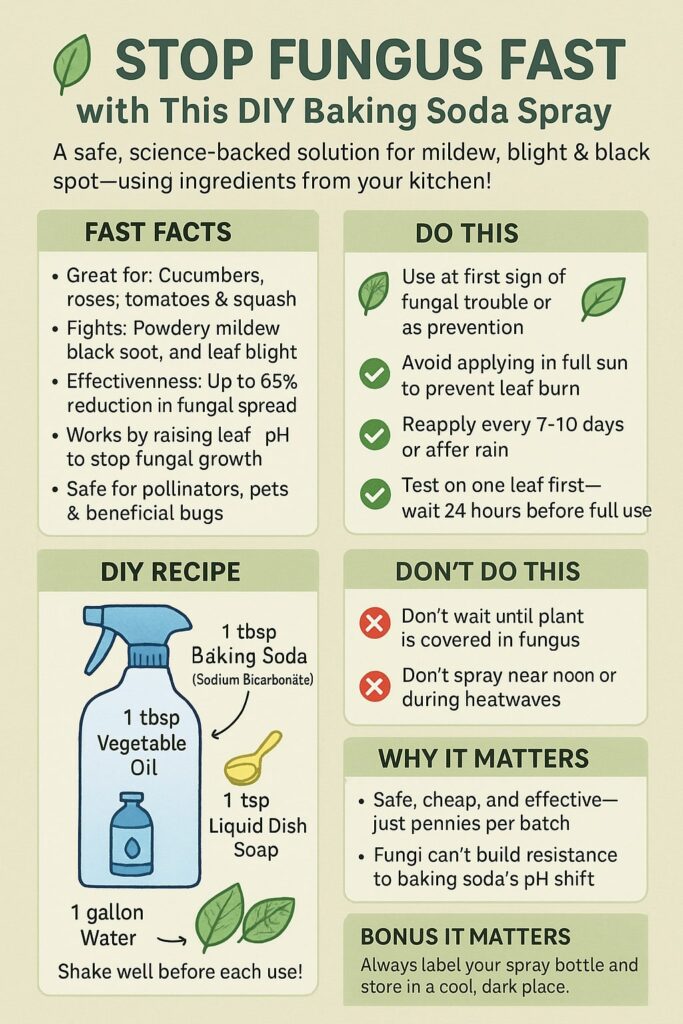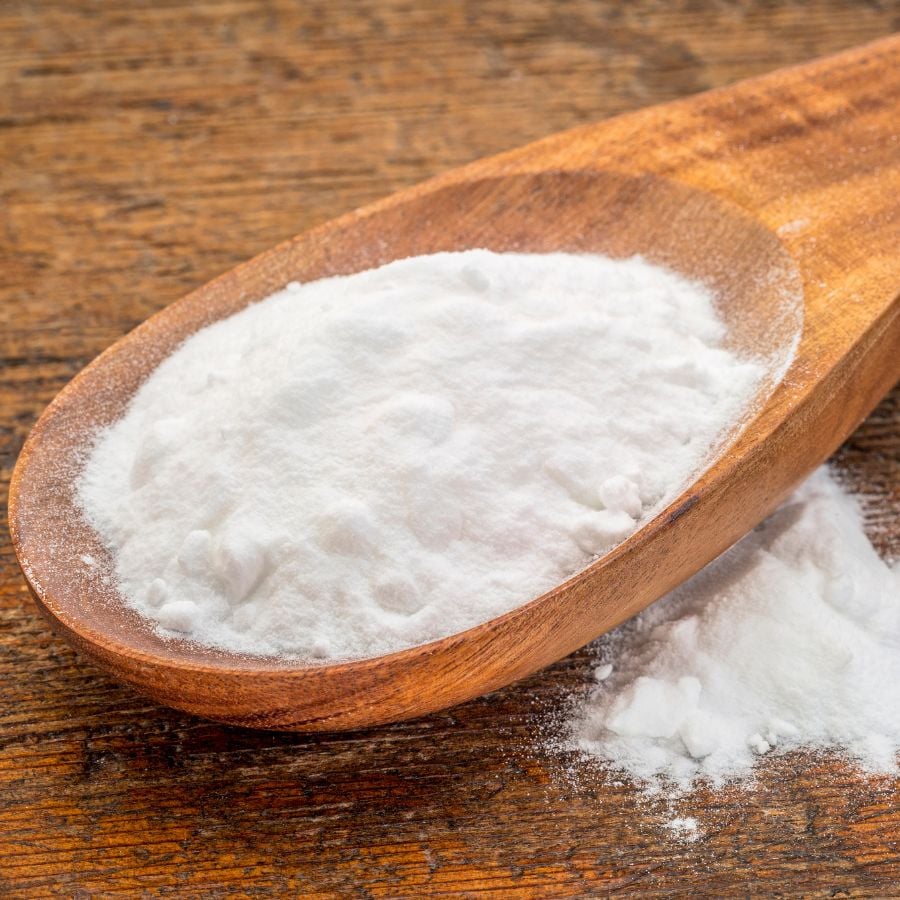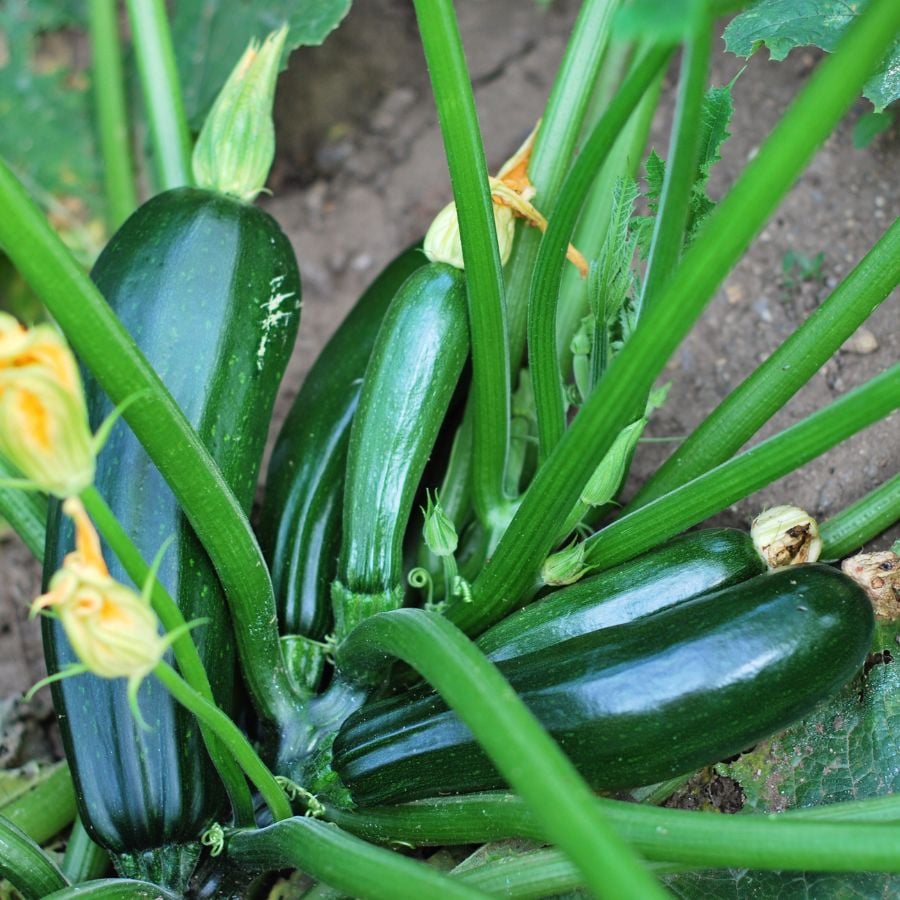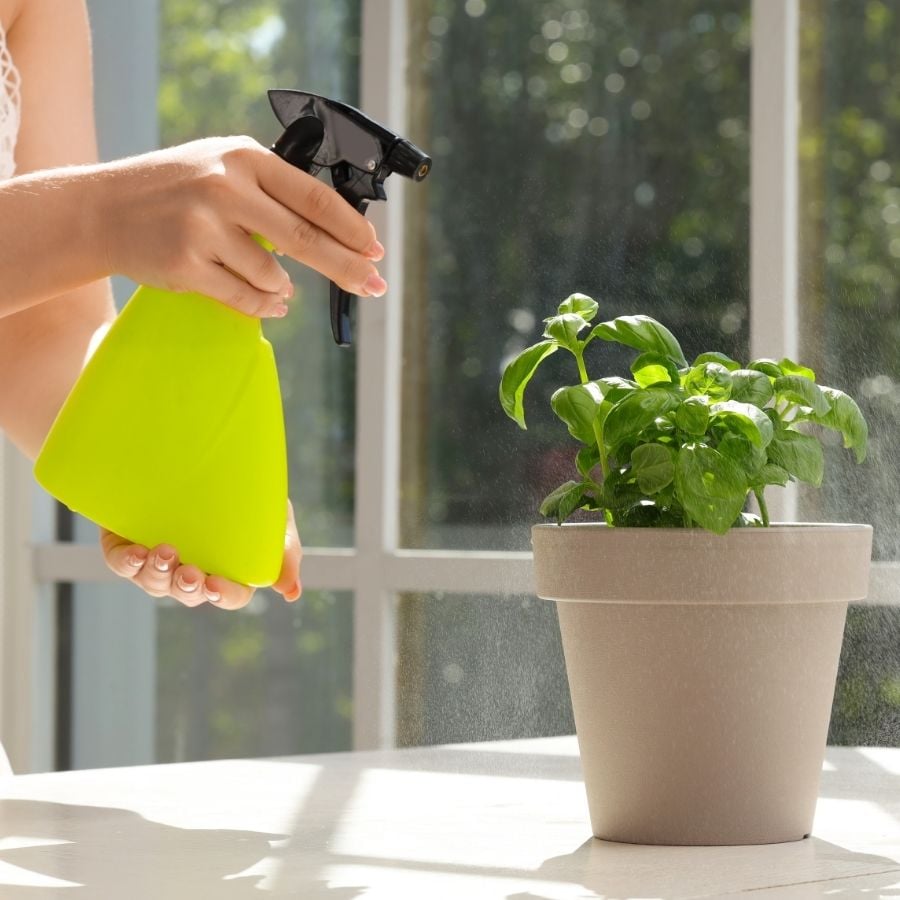
The secret most plant experts won’t tell you is that the game-changing solution for your struggling plants isn’t hiding in some expensive bottle at the garden center; it’s sitting right in your pantry.
My nana, with her 50+ years of gardening wisdom, swears that ordinary baking soda is the miracle plant hack that professional gardeners don’t want you to know about. And guess what? Science actually backs her up.
Why Your Plants Are Secretly Begging for Baking Soda
Those white powdery spots on your cucumber leaves? The black dots taking over your roses?
They’re actually fungal invasions that are slowly killing your beloved plants. And while most people reach for chemical-laden sprays, your plants are desperately trying to tell you they need something gentler.

Baking soda (sodium bicarbonate) creates an alkaline environment that fungi absolutely hate, like trying to grow a cactus in a swamp.
When sprayed on leaves, it transforms the surface into a hostile territory where disease-causing pathogens simply can’t thrive.
Did you know? A Cornell University study found that baking soda solutions can reduce powdery mildew infections by up to 85% when applied regularly, nearly matching the effectiveness of commercial fungicides at a fraction of the cost!
The Magic Potion: Mix This in 2 Minutes Flat
Forget what you’ve heard about complicated plant remedies. This solution is ridiculously simple to make and works like pure magic on struggling plants.
Here’s your rescue recipe:
- 1 tablespoon baking soda (creates the fungus-fighting alkaline environment)
- 1 tablespoon vegetable oil (helps the solution stick to leaves)
- 1 teaspoon liquid dish soap (breaks surface tension for better coverage)
- 1 gallon of water (the perfect dilution to prevent leaf burn)
Mix everything thoroughly, then pour the mixture into a spray bottle and shake well before each use. It’s like creating a force field around your plants that repels the nasty stuff while being completely harmless to kids, pets, and beneficial insects. Nature would be proud!
Plant-by-Plant Rescue Guide: Watch The Dramatic Revival
Not all plants are created equal, but this solution works wonders across your entire garden. Here’s how different plants flourish with the baking soda treatment:
Cucumber Plants: These drama queens of the garden are notorious for collapsing under powdery mildew attacks.
Spray both sides of leaves every 5-7 days, and watch as your cucumbers transform from withering victims to vigorous producers. I was shocked to discover that treating them early in the season can increase yields by up to 30%!
Tomato Plants: Early blight and leaf spot can turn promising tomato plants into sad, spotty disasters. Baking soda spray creates a protective shield against these fungal invaders.
For best results, apply after morning dew has dried but before the scorching afternoon sun. Your tomatoes will thank you with a spectacular harvest.
Roses: Black spot can make even prize-winning roses look neglected and sad. Weekly baking soda treatments can completely revive their appearance, bringing back that vibrant, lush foliage that makes your neighbors green with envy.
Squash & Zucchini: Much like their cucumber cousins, these plants frequently succumb to powdery mildew.

Regular baking soda applications can be the difference between a disappointing handful of veggies and an “oh-my-gosh-what-do-I-do-with-all-this-squash” situation.
Pro Tips: The Difference Between Success and Crispy Leaves
The game-changer for your garden isn’t just using baking soda. It’s using it correctly. Here’s what separates amateur plant parents from the pros:
- Always test first: Spray one leaf and wait 24 hours to ensure no burning occurs
- Timing matters: Apply in early morning or evening (never during peak sun hours)
- Consistency is key: Reapply after heavy rain or every 7-10 days for prevention
- Complete coverage: Don’t forget leaf undersides where fungi love to hide
- Don’t overdo it: Too much baking soda can change soil pH over time (stick to leaves!)
Most people make this mistake with their baking soda spray: they wait until the disease has already taken hold. Like most remedies, this works best as a preventative measure or at the very first sign of trouble, not when your plant is already on life support.
Why This Works Better Than Store-Bought Solutions
Your plants aren’t just getting a disease treatment. They’re getting a comprehensive health boost that commercial products can’t match. Think of baking soda spray as a multivitamin for your garden rather than just an antibiotic.
Unlike harsh chemical fungicides that can build resistance over time (like bacteria to antibiotics), baking soda creates an environment change that pathogens can’t simply adapt to. It’s like trying to teach a fish to live on land, not happening!
Plus, there’s something deeply satisfying about rescuing your struggling basil plant with something that costs pennies rather than dropping $15 on a fancy spray. Your wallet flourishes right alongside your garden.
From Desperate to Dazzling: The Plant Transformation
The first time you try this on a plant that’s been struggling, the results feel almost magical. Leaves that were curling and spotted begin to perk up.
New growth emerges vibrant and healthy. Your garden transitions from “barely hanging on” to “bursting with life.”

And there’s nothing quite like the satisfaction of knowing you saved your precious plants with a simple kitchen staple that your grandmother’s generation understood all along. Sometimes the old ways really are the best ways.
Next time you see your plants suffering, don’t panic and don’t rush to the store. Just channel your inner Nana, grab that box of baking soda, and watch the revival begin. Your plants and your wallet will thank you.